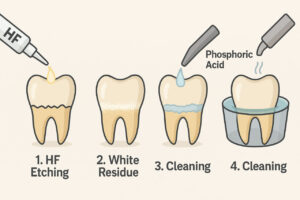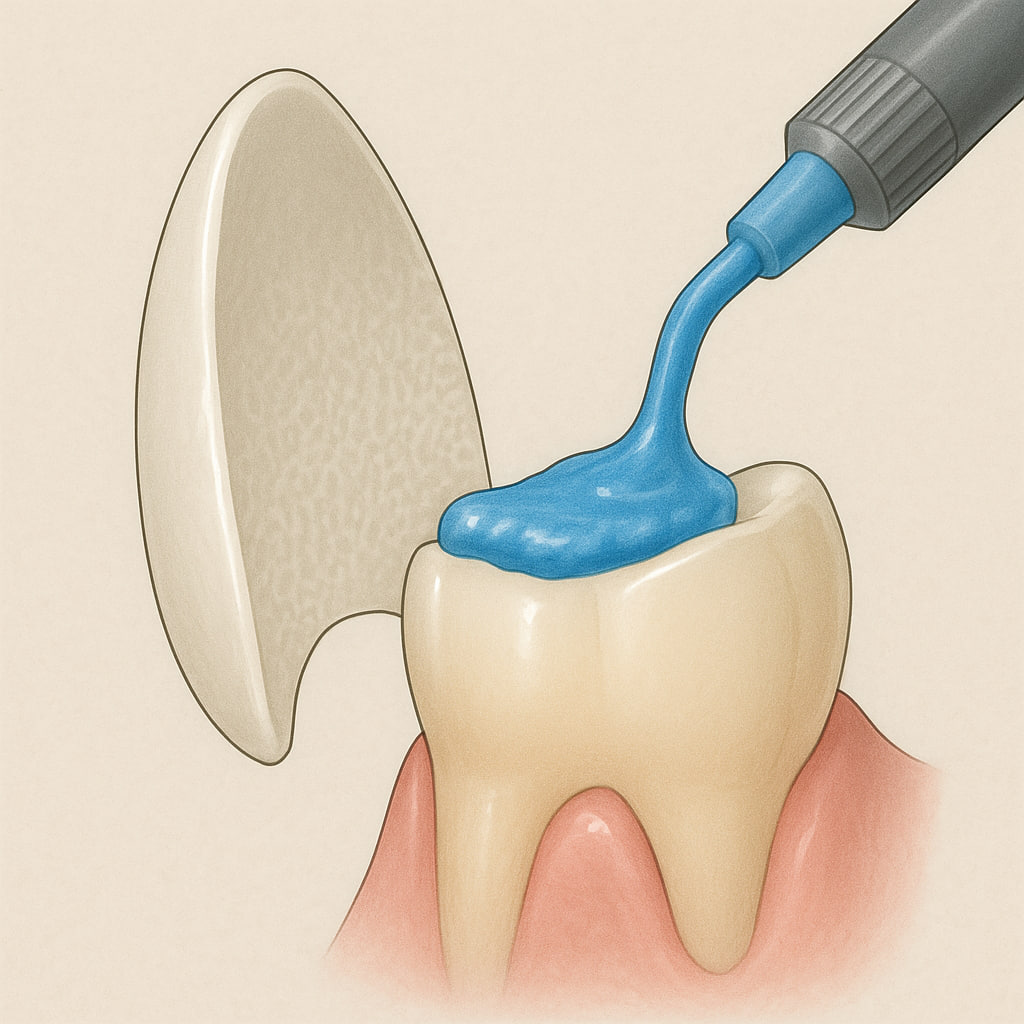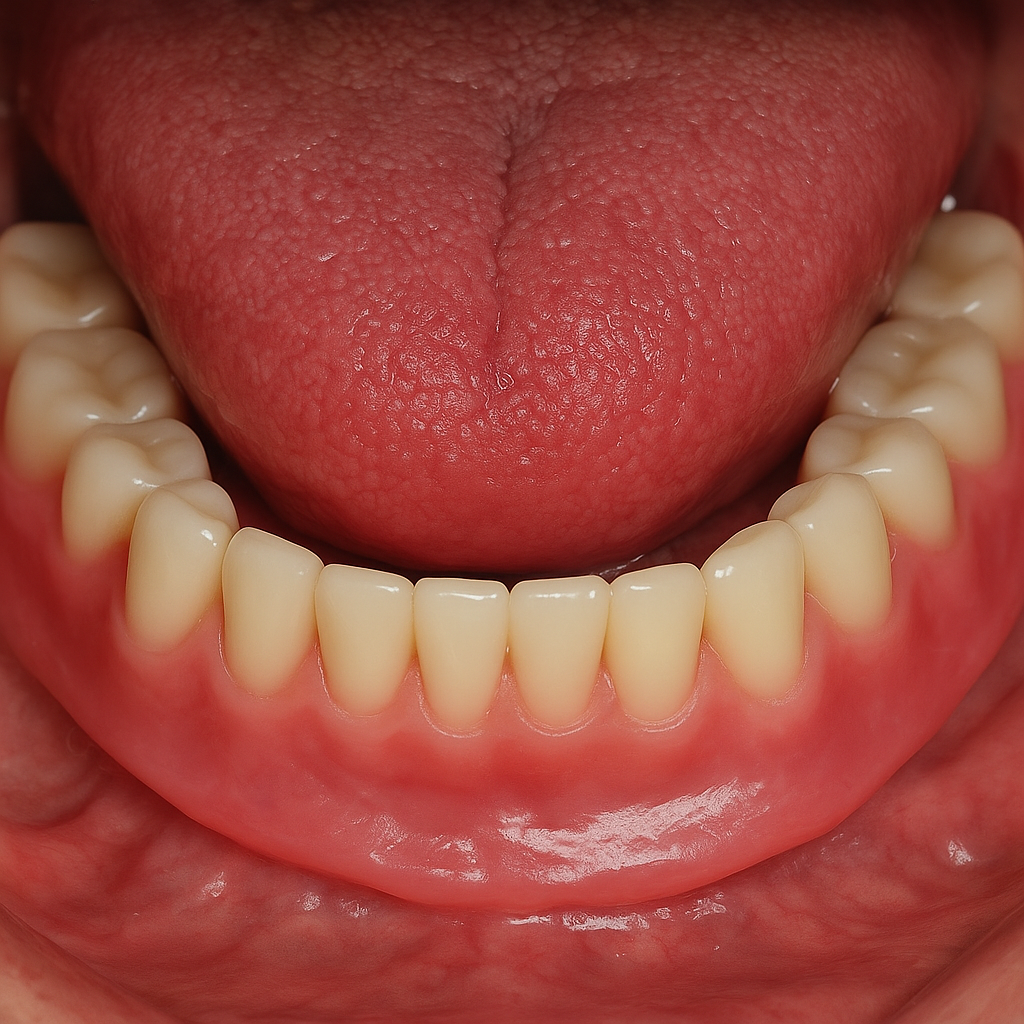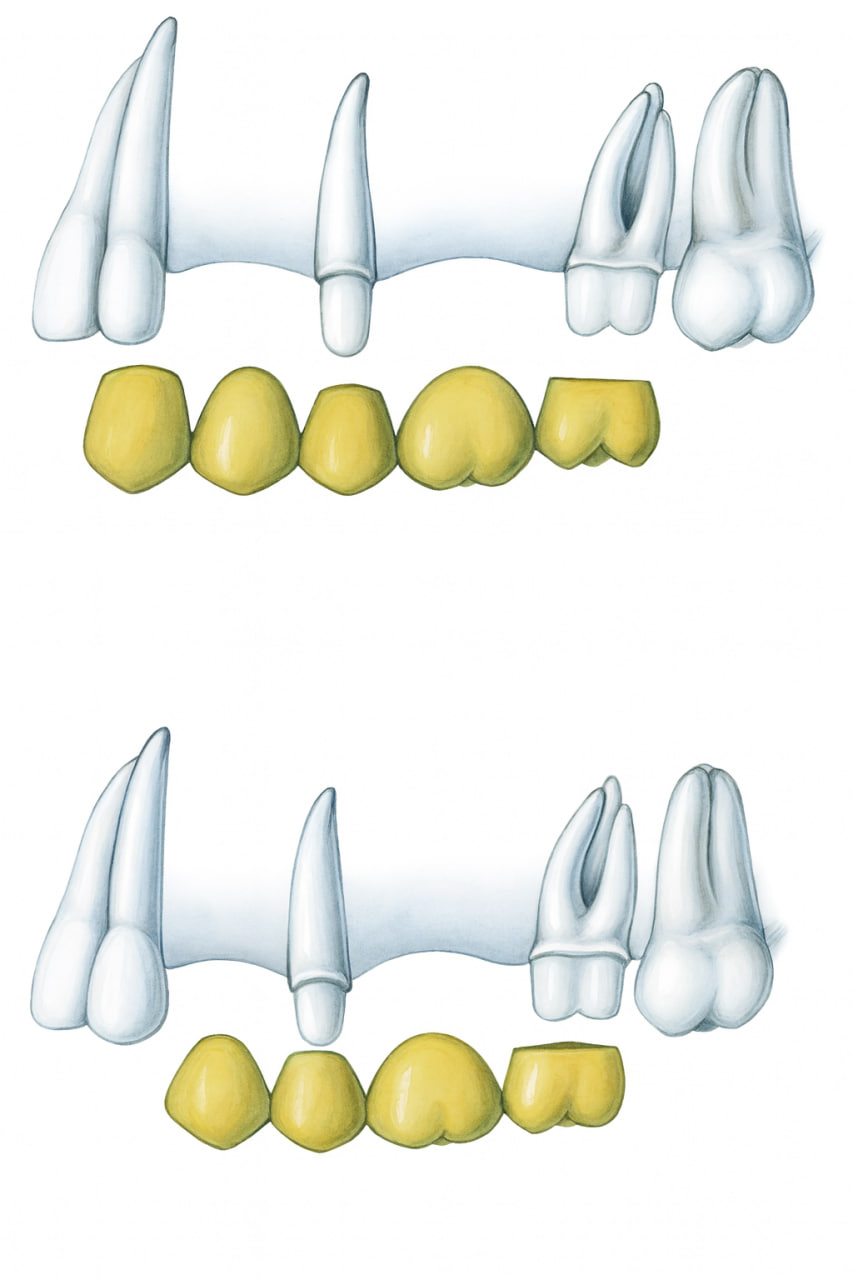Surface Preparation of Dental Ceramics for Bonding: Evidence-Based Protocols and Clinical Insights
1. Etching Responsibility — Keep It Chairside
Hydrofluoric acid (HF) etching should never be delegated to dental technicians. Multiple studies (e.g., Blatz & Sadan, J Esthet Restor Dent, 2018) have demonstrated that laboratory etching often deviates from manufacturer protocols—leading to over-etching, surface contamination, and reduced bond strength. The etching process must remain under the clinician’s control to ensure consistency and safety.
2. Hydrofluoric Acid Etching (HF)
Hydrofluoric acid is the primary agent for etching silica-based ceramics. Despite being a relatively weak acid chemically, it is highly toxic and corrosive. It can penetrate intact skin and alter systemic calcium levels without immediate visible damage.
4–10% HF gel is considered safe for dental applications under strict isolation and suction.
Mechanism:
HF dissolves the glassy matrix of porcelain, producing microporosities that increase surface energy and create micromechanical retention, analogous to the acid-etch pattern observed on enamel surfaces.
Safety recommendations:
-
Use a rubber dam or Teflon isolation, high-volume suction.
-
Wear eye protection, gloves, and a surgical mask.
-
Rinse thoroughly and neutralize residues post-etching.
3. Alternatives to HF Etching
-
APF Gel (Acidulated Phosphate Fluoride): occasionally cited as a safer option, but it requires significantly longer application times and yields inferior etching quality.
-
Silica coating followed by silanization or surface roughening + phosphoric acid + silane have been proposed as less hazardous substitutes.
However, their long-term reliability remains lower than HF-based protocols, especially under thermocycling conditions. (Rosenstiel et al., Contemporary Fixed Prosthodontics, 6th ed.)
4. Optimal Etching Times
Etching time depends on both acid concentration and ceramic composition:
| Ceramic Type | HF Concentration | Recommended Time | Glass Phase % |
|---|---|---|---|
| Leucite-based porcelain (~50% leucite) | 10% HF | 150–180 s | High |
| Low-leucite ceramics (~27%) | 10% HF | 60 s | Moderate |
| Lithium disilicate (e.max) | 5% HF | 20 s | Intermediate |
| Feldspathic porcelain | 10% HF | 90 s | Very high |
⚠️ Over-etching weakens the ceramic by excessive glass dissolution, creating deep grooves and fragile crystalline edges, ultimately reducing bond strength rather than improving it.
5. White Residue After Etching
A chalky white residue often appears after HF etching. Contrary to popular belief, this is not an indicator of successful etching—it represents over-etching and the formation of insoluble metal salts (fluorosilicates) that remain on the surface.
If not completely removed, this residue interferes with silane coupling and resin penetration, weakening the adhesive interface.
6. Cleaning Protocol for White Residue
(Keywords: ceramic surface cleaning, ultrasonic cleaning, phosphoric acid rinse)
Water alone is insufficient. Evidence-based cleaning options include:
-
Ethanol or acetone with a soft brush, followed by ultrasonic cleaning (5 minutes).
-
The Magne Protocol (Pascal Magne) involves applying 37% phosphoric acid for 30 seconds, then rinsing and cleaning ultrasonically. This method effectively removes salts and restores a reactive surface for silane application.
7. Final Steps Before Bonding
After complete cleaning and drying:
-
Apply the silanization agent for 60 seconds.
-
Dry gently with warm air.
-
Proceed with resin cementation using a dual-cure adhesive resin compatible with ceramic substrates.

Conclusion
Proper surface preparation of ceramics is critical for durable bonding.
Following controlled HF etching, careful cleaning, and precise silanization ensures maximum bond strength and longevity. Despite ongoing development of alternative techniques, hydrofluoric acid remains the gold standard for silica-based ceramics when handled safely and according to evidence-based guidelines




